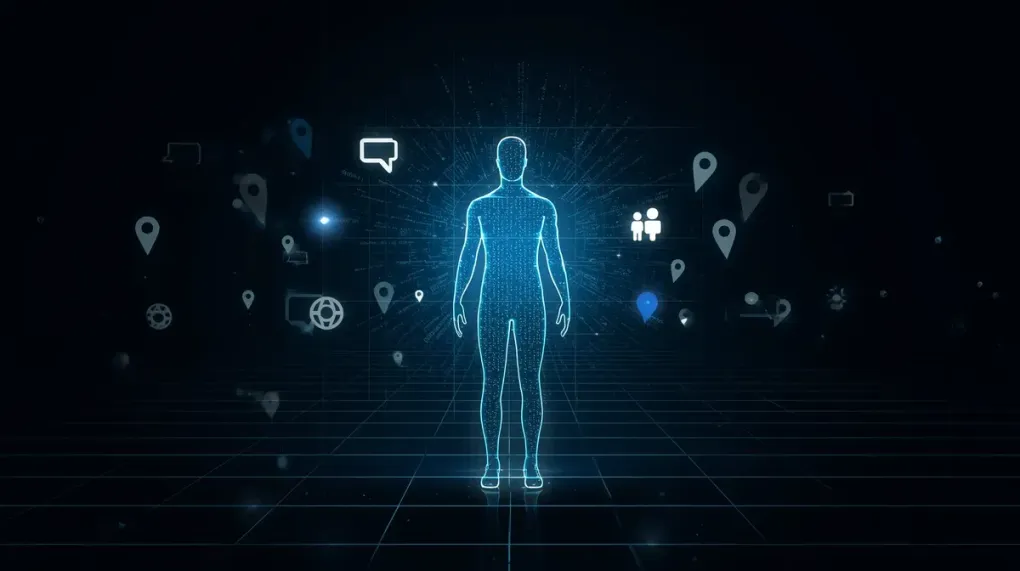
The Privacy Mindset: A Modern Guide to Digital Self-Defense
Have you ever had a private conversation about a product, only to see an ad for it on your phone moments later? It’s an unsettling feeling that has become all too common. In the face of pervasive tracking, it’s easy to become cynical and declare that “privacy is dead.”
But privacy isn’t dead. It has just become a skill. The common refrain, “I have nothing to hide,” misses the point entirely. Privacy isn’t about hiding wrongdoing; it’s about protecting your autonomy, your thoughts, and your identity from being packaged and sold. As one expert puts it, “Even if you have nothing to hide, you have everything to protect.”
True digital security doesn’t come from a single tool or app. It comes from a privacy mindset—a conscious and proactive approach to managing your digital life. Here’s how to cultivate it.
The Principles of Digital Self-Defense
Inspired by the concept of “Privacy by Design” used in software development, we can apply a few core principles to our personal lives.
-
Be Proactive, Not Reactive: Don’t wait for a data breach to think about security. The privacy mindset is about anticipating risks. Before you download a new app or sign up for a new service, take a moment to consider what data you might be giving away.
-
Never Trust the Defaults: Default settings are designed to maximize data collection for the company, not to protect you. The single most important habit you can develop is to spend two minutes exploring the privacy and security settings of every new app, device, or platform you use. Turn off everything that isn’t essential for the service to function.
-
Understand the Bargain: “Free” online services are not free. You pay for them with your data. The privacy mindset involves consciously asking, “Is the convenience of this service worth the data I am giving up?” Sometimes it is, but the choice should be deliberate.
-
You Are in Control: Adopting a privacy mindset is an act of taking control. It’s about deciding what parts of your life you share, and with whom. It is a form of digital autonomy.
A Practical Guide to Taking Control
Cultivating the mindset is the first step. Here are actionable steps you can take to put it into practice.
-
Action 1: Map Your Digital Footprint Before you can protect your data, you need to know what’s out there. Start by searching your own name and email addresses online. Use a service like HaveIBeenPwned to see if your accounts have been compromised in known data breaches. You might be surprised what you find.
-
Action 2: Compartmentalize Your Digital Life You wouldn’t use the same key for your house, your car, and your office. Apply the same logic to your digital life. Avoid using a single Google or Facebook account to log into all your other services. Create different email addresses for different purposes:
- One for critical accounts (finance, government).
- One for social media and online shopping.
- One for newsletters and disposable sign-ups. This simple step prevents a breach in one area from compromising your entire digital life.
-
Action 3: Strengthen Your Locks Your accounts are only as secure as their passwords. Stop reusing passwords and creating simple variations. Instead:
- Use a Password Manager: Tools like Proton Pass, Bitwarden, or 1Password generate and store strong, unique passwords for every account. You only need to remember one master password.
- Enable Two-Factor Authentication (2FA): 2FA is not “tedious and unnecessary”; it is one of the most effective defenses you have. Even if a hacker steals your password, they can’t get in without your second factor (usually a code from your phone). Use an authenticator app like Proton Authenticator, Google Authenticator, or Authy.
-
Action 4: Choose Your Tools Wisely Make a conscious effort to use services that are designed with privacy in mind. You don’t have to change everything overnight, but every small step helps.
- Browser: Switch from Chrome to a privacy-focused browser like Brave or a hardened Firefox.
- Messaging: Move your personal conversations from SMS or Facebook Messenger to an end-to-end encrypted app like Signal.
- Email: For sensitive communications, consider a service like Proton Mail.
-
Action 5: The Quarterly Privacy Audit Make it a habit. Set a reminder in your calendar once every three months to do a quick digital clean-up. Review app permissions on your phone, check the privacy settings on your social media accounts, and delete old apps and accounts you no longer use.
Conclusion: Privacy is a Practice
Adopting a privacy mindset isn’t about achieving a perfect, invisible state. It’s about making small, incremental improvements that give you back control. It’s about progress, not perfection.
Don’t let the scale of data collection lead to apathy. Every time you question a default setting, choose a better app, or use a unique password, you are casting a vote for a more private and secure digital world. Privacy is a practice, and it’s one worth starting today.
Sources:


